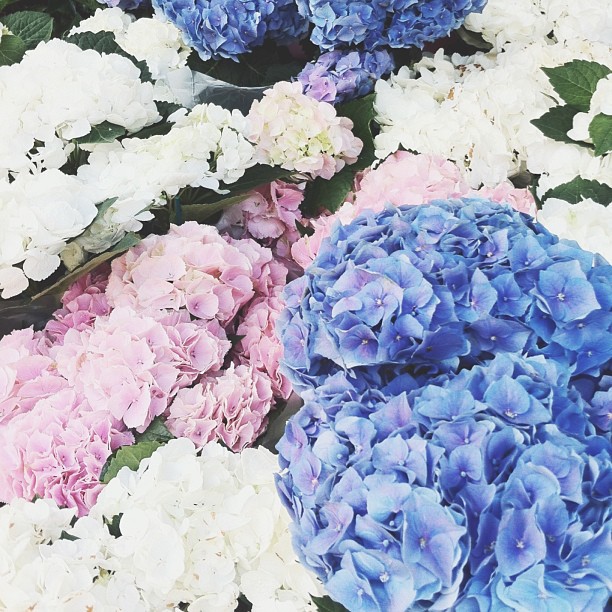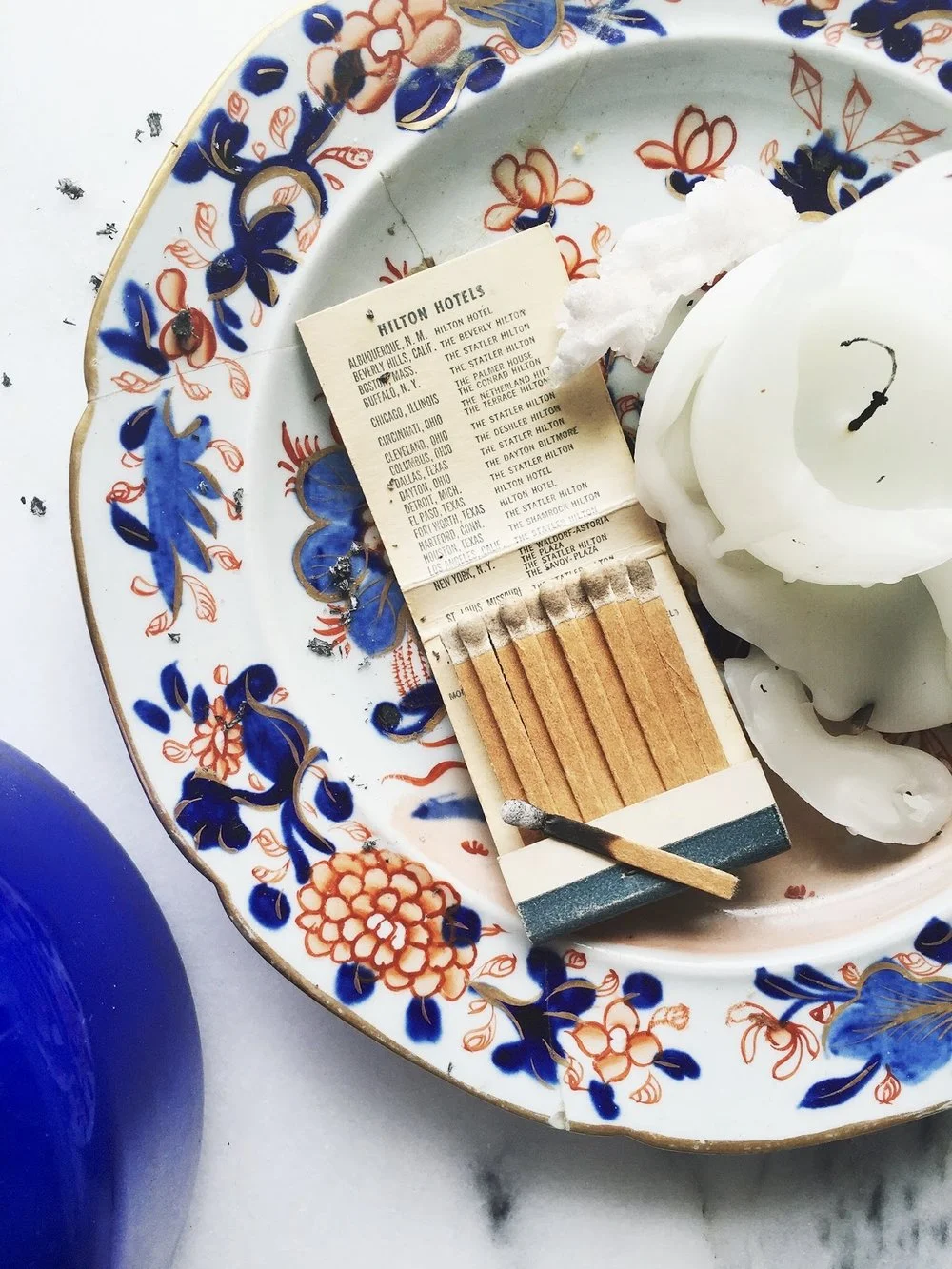Feeling Feelings
A guide to when your emotions feel as dainty as a flower or fiery as a spark, on uncontained emotions, and remedies . . .
On the heels of the inauguration of a misanthrope and the Women's March, "all the women in me. are tired." Perhaps my state of emotional erosion is from not having had the ability chain my arm to and march alongside other women and men this weekend. I felt angry, with no outlet to release it and get nasty.
But this erosion is historical, and we as women contain it in our cells. Psychologist Wilfred Bion refers to this particular state of emotional existence the uncontained state, where thoughts or emotions are imbued with either a projective—that of underlying, subconscious responses—and thus male or a receptive and female quality. Powerful , articulated emotions in this case are not one spoken by quiet tongues of women and other minorities unheard. Unlike a Cheeto-fuming man whose emotions are uncontained and thus released, the receptive is stuck in a stasis of withholding emotions or thoughts.
“When an emotion is uncontained, it's a cry to have another see, hear, and hold space for them”
When an emotion is uncontained, it's a cry to have another see, hear, and hold space for them. Here, we can see the archetype of mother or woman again. This emotional cycle is rooted in childhood, where the mother functions as a "container" for the infant. She holds raw psychic material—thoughts, emotions, spiritual pain—acknowledges it, and endows it with meaning. She essentially metabolises or breaks apart the raw effects so the child can then digest their emotions appropriately. Eventually, the child learns through this cycle to reflect on his own sensations and emotional experiences independently.
Unfortunately, not many adults become their own container. Hauled by uncontained emotions that surround them, they either politely bottle them up or release them through external stimulations, addictions, self-harm, or even crime.
“A festering of buried emotions bruise our system, creating dis-ease in the body”
This takes a toll on our bodies. Dr. Habib Sadeghi points out that out of the 23.5 million American who suffer from autoimmune disease, 75 percent of them are women according to The National Institute of Health (NIH) with a 10:1 ratio of Hashimoto's thyroiditis, 7:1 of Grave's Disease, and 9:1 of Lupus.
A festering of buried emotions bruise our system, creating dis-ease in the body. We strive to meditate in the morning, eat breakfast, get promoted at work, get drinks with friends but also detox, do yoga and run the extra physical mile so we can take that nightcap of judging ourselves for inadequacy for not running the extra metaphorical one.
We need to remember that emotions are emotions, neither good or evil. They all equally need to be acknowledged, voiced or processed, and released. Below is a guide to feel your feelings and be a container for yourself. It's about the feminine, of letting go and trusting our intuition. And when you cannot, as I could not last night, call on another. Help is humbling . . .
addiction
We are all amidst the inane destruction of addiction—to illicit drugs, alcohol, but also to self-inflicted pain and negative patterns, habits, and thoughts. Because we are pained by being alone with ourselves. My, here's to going deeper than our perceived failures and feel our own constitution, unimpeded by any external forces with Elena Brower.
kundalini kriya
The Addiction kriya is one of the most incredibly powerful meditations I have ever experienced. My first time of attempting to commit to it for 40 days—the period it takes to form a habit and new neural pathways—I could not finish the full schedule. It brought up deep-seated anger and fear hidden in some crevice within me that would later manifest, unsurprisingly, physically as a headache. It was my body's way of release. After having completed my first round successfully, I now have this meditation as an arsenal to shield myself from habitual negative tendencies.
energy medicine
Prevention over treatment first, I recommend doing this energy medicine routine everyday to recharge and protect your energetic shield. If you don't have the time for the whole routine, at least pick one from the video or do this quick option: hold your first four fingers over your eyes, take a deep breath, then slowly pull them towards your temples, up above your ears, towards the back of the skull, then to your shoulders, and meet your hands over your heart chakra with another few long, deep breaths.
altar
One reason why I am currently feeling all the feelings is because the anniversary of my sweet grandfather's death is coming up. It's been three years and I'm being patient with my own time. To honestly acknowledge and process my continued grief, I have created an altar in his honour. Here's my guide to how to do perform a puja or create an altar if you're processing grief. You could create an altar, however, for other purposes as well. One which I find powerful is to create one in honour of ourselves.
flower remedies
An ancient remedy popularised by Dr. Bach, there is such sweetness and unexpected power that comes from the petal. My favourite lines are Lotus Wei and Alexis Smart Flower Remedies. Alexis has beautiful blends ranging from an urgent care for stress called First Aid Kit, one for balancing hormonal fluctuations aptly called Moon River, and a blend for everyday worries called Peaceful Worrier.
exhaustion & physical pain
If you suffer from direct physical manifestation of your uncontained emotions or as a symptom of a manifested disease, massaging the area with my favourite Narayan Balm or White Flower Balm, Arnicare, or diluted Frankincense essential oil will bring immense relief.
eyes shut
Sometimes, thick wool socks, a big blanket, and a bigger nap under an eye pillow is needed. Take it.
words spoken
Japanese scientist Masaru Emoto conducted an experiment in the 1990s on the power of words with water. He had separate vials labeled with negative phrases such as "I hate you" and "Fear" filled with pure water. When he froze them, the water did not crystalise as unlabeled pure water does but yielded grey misshapen clusters. In contrast, vials labeled with positive phrases such as "I love you" and "Peace" filled with polluted water produced perfectly-shaped crystals.
Considering that our bodies are composed of 70% water, this experiment is a potent reminder of how our words resonate within our cells and can change our composition. Many of us use, and repeatedly do so, negative words out of habit. We are unintentionally creating pathways in our brain as it uses repeated learning patterns to create consistency in the world. The next time someone asks you how you are or you monitor your self-talk, pay attention to your words. Switch the way in which you word inherently negative situations. For instance, instead of saying "today was a bad day," say "I'll wash the day off with a bath" or "I've had better days." Sneak in new, positive words that you habitually don't use. Life begins at the tip of the tongue . . .
Blue for more tips?
Here's our guide to Beating the Blues from the Thirlby archives . . .



